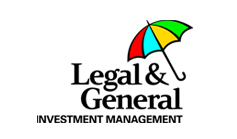
In today’s disruptive world where societal, technological and geopolitical forces are continually shifting the landscape for business leaders, no role is transforming more than that of the chief financial officer.
Criticaleye’s recent CFO Retreat, held in partnership with AlixPartners and Workday, explored this theme under the banner New Models for Growth. Financial leaders in attendance were afforded the opportunity to discuss different ways to unlock value, build organisational resilience and lead the strategic direction of their organisations.
Tim Roberts, Partner & Managing Director at AlixPartners highlighted the need for businesses to balance a strategic plan with being agile in an uncertain environment. “There's a quote that goes ‘no plan survives first contact with the enemy’. At present, the enemy is the disruptive forces at work in the economy.
“We've therefore got to be more agile and find ways of adapting more quickly, … [deciding] where we choose to invest and where we choose to disinvest.”
This idea of adaptability is particularly important for the CFO, who must be constantly managing risk and assessing the impact of a fluid operating environment on financial planning and the broader strategy of their business.
Priya Chowdary, former CFO Europe at Encyclis, said: “I think a really high performing finance function has to be very adaptable. You're constantly understanding the challenges of the changing environment and as a CFO, you have to constantly upscale and downscale.”
While there must be scope for tweaks to the financial outlook of a business, this must be driven by a scenario analysis approach, according to Ed Jones, a NED at NOW: Pensions and former CFO of Carnival UK.
“One of the challenges for many businesses in this environment is understanding what the trading out-turn could be next year. As a CFO, you're seeing certain signs, but you're not sure and you're worried about what's yet to come. For me, the best way to handle this is to look at scenarios,” he said.
It’s no surprise that cost-cutting was a regular topic throughout the Retreat, given the pressure on balance sheets. Ultimately, it comes down to the CFO to make the right call with regards to where to spend and where to tighten across the business.
"It's doing cost-cutting in a purposeful way,” Ed continued. “The CFO who understands their business and its drivers, the customers and the value proposition and where there's a clear purpose and [strategy], is better equipped to navigate the environment where you have to make these types of decisions.”
Matthew Blagg, Criticaleye’s CEO, commented: “I think there's a real danger in the role of CFO becoming too reactive because there's more demand on restricting spending in the current environment, when their focus should be on empowering others in the organisation and identifying how to improve performance.
“We’ve all seen that geopolitical events can arise out of nowhere and change everything. This means that we're into a period where leadership has to be able to react quickly to different scenarios, but within that it’s vital to remember that in times like these there are usually huge opportunities for growth and innovation.”
Different Hats
CFOs often have to wear multiple hats and play a unique role within the executive team. Peter Morton, CFO at Rolls-Royce SMR said: “I would argue we are becoming something akin to the chief negotiating officer. The CEO may choose to delegate to you as a trusted partner, and given you are likely to have the trust and confidence of most of the executive leadership team, your role is often to execute those decisions. This relies on your ability to build constructive relationships and hold high levels of integrity.”
Good relationships with the Chair and non-executive team is also vitally important, as alluded to by Ed: “The Board needs to be very supportive when management are facing challenging times and have their heads down and are running flat out. Equally, if there's a clear spine of a strategy, management can then begin to look at the short-term challenges through the lens of opportunity in the medium term. I think the Board has a key role in ensuring that remains the case.”
It doesn’t stop there for a CFO. Tim described the role as shifting into the realm of a ‘chief investment officer’, regularly assessing the portfolio of investments. “If the rate of change is speeding up, you've got to be more actively managing that portfolio. You’ve got to bring more of a risk lens, because any chief investment officer has to think about reward and risk,” he said.
“The future CFO has to have a good understanding of risk, its financial implications, how to model it and to have a ‘portfolio management’ mindset,” Tim stressed. “They need to be close to and understand the business, not just the financial aspects of the business, but also the operational drivers and operational risk factors.”
Sustainability-related reporting is now an indispensable part of the CFO’s remit, given developments such as the EU Taxonomy and the Task Force on Climate-Related Financial Disclosure (TCFD) framework, which require certain companies to disclose data relating to the sustainability of their activities.
Fiona O’Shea, CFO at Córas Iompair Éireann said: “What's coming down the track in terms of the reporting requirements is what is fundamentally changing the role of the CFO going forward. We’re moving from a world where organisations were able to make verbal commitments and statements of intent into having to demonstrate actual achieved results.”
All of these various aspects combine to produce an incredibly complex catalogue of responsibilities for the CFO which go way beyond simply leading the finance function, as the role was once conceived.
The pressure is certainly on, but those CFOs with strategically aligned executive and non-executive teams will benefit from the weight of burden being shared more evenly. But make no mistake, the voice of the CFO is louder than ever.
By Jacob Ambrose Willson, Senior Editor, Criticaleye

























